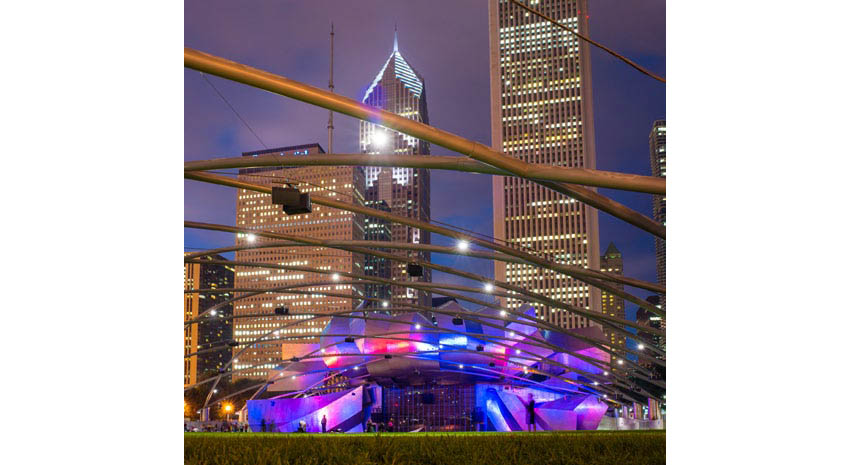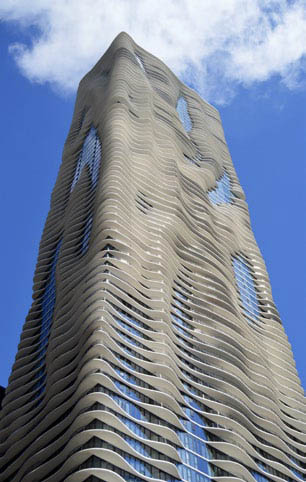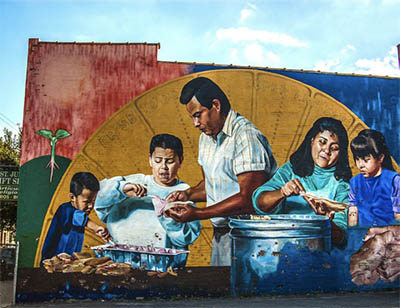Destinations, Editorial, June 2017, Magazine, United States

Photo: © F11PHOTO | DREAMSTIME.COM
IT’S “THE BEST OF TIMES, THE WORST OF TIMES” in Chicago, a microcosm Tale of Two Cities, with outlying neighborhoods plagued by crime while the urban core prospers. Of 500 highly publicized gunfire incidents recorded in the first two months of this year, 100 of them homicides, a map shows the crimes were restricted to districts wrapped around the inner city, where not a single shooting took place. Despite a loss of revenue from the bankrupt State of Illinois floundering to work out a budget, outside the beleaguered area development manages to thrive. Home to more than two dozen Fortune 500 companies in manufacturing, insurance, food processing, printing and publishing, Chicago rates among the world’s 20 largest economies.

AQUA BUILDING © JIM ROBERTS | DREAMSTIME.COM
The heart of the city, one of the world’s most important Central Business Districts, the Loop embraces business and government office towers, a theater district and a wealth of cultural institutions: the Lyric Opera, Chicago Symphony and Joffrey Ballet. The former Marshall Field’s department store is being repurposed, and the iconic Palmer House Hotel has been fully renovated. Extensive railroad yards that once overran the lakefront have revitalized into a green urban park with an amphitheater designed by Frank Gehry; Jeanne Gang’s award-winning Aqua mixed-use residential office tower; and Anish Kapoor’s silver Cloud Gate sculpture, nicknamed The Bean, with a shiny surface that reflects the surrounding urban activity.
Property values are soaring in the West Loop, a gritty industrial area of wholesale markets, meat packers, food distributors and warehouses rapidly transforming into a lively area of hotels, offices and apartments. McDonald’s is relocating its headquarters from Oak Brook to a super-sized office building on the former site of Oprah’s Harpo Studios in the Fulton Market District, and Caterpillar announced plans to move its global operation to town from Peoria. Farther west in Garfield, Leslie Hindman Auctioneers is converting a 30,000-square-foot warehouse into a consignment business to sell furniture and decorative art online. Nearby, an 80,000-square-foot entrepreneur incubator, The Hatchery, will provide space to foster 75–100 food service startups which reinforce the city’s active restaurant scene.
Another incubator, 1871, acquired space to nurture tech startups among the longstanding showrooms for interior design, furniture and apparel in the mammoth 4.2-million-square-foot Merchandise Mart. Named for the year of the Chicago fire, which led to an innovative rebuilding of the city, 1871 provides an affordable downtown place for tech startups “to share ideas, make mistakes, work hard and build up businesses intended to change the world.”
Massive expansion of O’Hare International Airport with flights to more than 150 domestic destinations, a Midway Airport upgrade and reconstruction of the Dan Ryan Expressway all enhanced the city’s accessibility. Located in the middle of the country with both U.S. coasts and Washington, D.C., easy daytrips away, the city offers a convenient out-of-town commute for lawyers, consultants and bankers.

MURALS ON A BUILDING IN PILSEN © STEFANIA ROSSITTO | DREAMSTIME.COM
Gentrification progresses in neighborhoods contiguous to the central city without sacrificing ethnic and historic character. Latino Pilsen maintains its colorful murals, Humboldt Park remains rich in Puerto Rican heritage, and landscaped boulevard medians make up the “emerald necklace” embracing Logan Square. Farther afield, the Barack Obama Presidential Library is expected to boost revitalization of Jackson Park.
A wealth of outdoor fitness options, many linked to the shores of convenient Lake Michigan, balance the city’s gourmet bounty. Within walking distance of office towers discover wide, sandy beaches where swimmers can also rent canoes, kayaks and paddle boards. Cyclists and joggers enjoy several designated paths, notably the Lakefront Trail, stretching 18 miles past museums, harbors, monuments, beaches and high-rises. Those undaunted by the notorious winters can ice skate outdoors at several city rinks. Local concessions offer snowshoeing, cross-country skiing and curling; and right downtown (and lit at night) sits the 220-foot slope of the Soldier Field Sledding Hill. Less strenuous therapies await at distinguished downtown day spas such as Charles Joseph Salon and Spa, the Red Door and Mario Tricoci.
With North America’s largest convention center, McCormick Place, and facilities at Navy Pier, the city is a leader in group tourism. A consolidation of tourist and conference agencies into the official sales and marketing promoter Choose Chicago bolstered tourism, and the 2016 tally was already within a million of Mayor Rahm Emanuel’s goal to reach 55 million visitors by 2020. Chicago frequently ranks as a top city to visit, a fitting tribute to America’s nicknamed Second City.
SCENIC DRIVES
Outlying areas offer worthwhile daytrip destinations. An hour and a half north in southeast Wisconsin, Lake Geneva was the popular summer retreat of Chicago’s wealthy barons. Their Gilded Age mansions line Shore Path, and the Grand Geneva Resort & Spa was the site of Hugh Hefner’s original Playboy Club.
Heading south to Peoria, the 150-mile drive passes the Midewin National Tallgrass Prairie in Kankakee, 1,200 acres of restored meadow grassland inhabited by a herd of bison. Capponi’s and Mona’s restaurants in Toluca make popular stops for tortellini or signature fettuccini. In Peoria sample whiskey at J.K. Williams Distilling or 175 whiskeys on hand at the Hearth Restaurant, serving wood-grilled steaks and chops.
A fitting destination for this 150th anniversary year of Frank Lloyd Wright is a visit to the architect’s studio and the world’s largest collection of his designs in Oak Park. The Chicago suburb, a half hour west of downtown, claims 21 Wright-designed structures which can be toured by foot, car or a special two-hour pedal tour.
